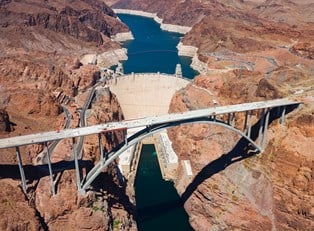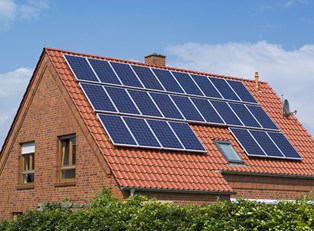What is renewable energy, anyway? The main factor in differentiating renewable energy sources from other energy sources is the “renewable” portion, which is classified by whether they are depleted when they are used.
The most common non-renewable energy sources are fossil fuels: coal, petroleum, and natural gas. Although fossil fuels are relatively inexpensive to extract, the burning of fossil fuels is extremely harmful to the environment because it releases polluted particles into the air, water, and land. Extensive use of fossil fuels has polluted several environments and led to the extinction of several species.
In an effort to combat the burning of fossil fuels several people have turned to the utilization of renewable energy sources. Each of these sources has different levels of practicality in different situations. The amount of energy you need is going to greatly determine which source of renewable energy is going to work best for you. In other words, you don’t need to build a whole hydroelectric dam just to power your house.
Here are the seven most common types of renewable energy sources as well as how they can be utilized.
Bioenergy
Bioenergy is a type of renewable energy source from organic materials called biomass. Biomass often consists of waste byproducts from agriculture, such as the fibrous matter, which remains from sugarcane after sucrose extraction. Large amounts of biomass materials can produce enough heat and methane gas for a small family to live off of. Methane gas is known as a biogas biofuel. Biofuels are most useful in liquid or gas, easy to transport, and burn cleanly.
Organizations, farms, and even towns can use it to generate electricity and fuel fleet vehicles, which run on biofuels.
Geothermal
Geothermal energy is extracted from the heat of the Earth. Geysers, lava mountains, and hot springs are all natural examples of geothermal energy. These sources are great for any process, which requires a heat source.
Geothermal energy can be used to heat buildings, grow greenhouse plants, and aid with various industrial processes, such as pasteurizing milk.
Hydroelectric
Hydroelectric energy results from harnessing the power of flowing water. Assuming a dependable waterway source is accessible, hydroelectric energy can be used to power farms, ranches, and small towns.
There is currently a proposal in the works—backed by activists, scientists, and financial advisorstos—to turn the Hoover Dam into a giant battery, which would be able to provide power to more than 1.3 million homes. However, the conversion of the dam will take a long time and a big budget.
Hydrogen
Hydrogen fuel cells produce electricity by combining hydrogen and oxygen atoms. This combination results in an electrical current, which can be used to refine petroleum, treat metals, provide fertilizer, and process foods.
Though hydrogen can be produced through the use of fossil fuels, it can also be generated through the use of renewable energy sources.
Ocean
The oceans are teeming with energy. Tidal forces move immense masses of water. Strong winds build up mighty waves. Almost 90% of global wind energy is contained in the turbulence above the world’s oceans. Wind, waves, and currents contain 300 times more energy than humans are currently consuming!
There are still only a few ways to harness the oceans immense power at this point. But, with advancing technology, we may one day be able to power whole seaside communities.
Solar
Solar power is derived directly from the sun's rays. This is probably the most well known because solar panels were invented in the 1940s. As if saving the Earth from harmful pollution wasn’t enough motivation to invest in solar panels, you can also save money on electricity bills, and some electrical companies will even pay you for excess power generated.
Though solar panels are the most familiar way to collect solar energy, there are a variety of solar energy technologies that are used to convert the sun's energy and light into heat, illumination, hot water, electricity, and cooling systems for homes and businesses.
Wind
You don’t have to make your own wind farm to get results from wind energy. One average-size wind turbine can generate more than 6 million kWh in a year, which is enough energy to provide 5 average households with power for over 100 years.
Wind flow can be captured by turbines and converted into electricity as a supplementary supply for businesses and communities. On a smaller scale, windmills can also be used to pump water on farms.


